Environmental Briefings
Environment Australia is tasked with managing the networks of Commonwealth Marine Reserves. This is particularly challenging in the remote and poorly known N and NW regions. For example, managers need to understand how biodiversity varies across these regions, but no dataset of this exists. To provide a starting point for building this knowledge, researchers from Australia's NESP Marine Biodiversity Hub's D1 project here highlight five key environmental variables that may help predict biodiversity patterns across the regions.
These variables were identified because continuous datasets of them are available over the entire N and NW regions, and they serve as proxies for other variables that may more directly affect biodiversity. For example, no regional-scale dataset of substrate hardness currently exists, but available datasets of bottom current velocity and geomorphic features help determine substrate hardness patterns.
Click on the name of each environmental variable in the list below (originals were: depth, sediment grain size, chlorophyll-a, geomorphic features and bottom current velocity) to view an interactive map and read more about it. More datasets will be added to this section as they become available.
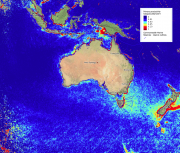
Much of life on earth ultimately depends on the capture of light from the sun and its translation into energy via photosynthesis.
Understanding sea surface temperature and how it varies across the globe over time is incredibly important. The oceans cover 71 percent of the earth's surface.
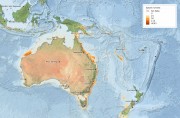
Species richness is a count of the number of different species that exist in a given region or ecological community.
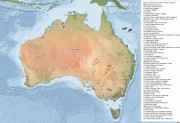
Wetlands are a critical part of our natural environment. They protect our shores from wave action, reduce the impacts of floods, absorb pollutants and improve water quality.
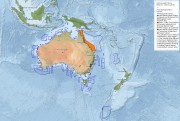
World Heritage Areas are places that are considered to be of outstanding value to humanity.
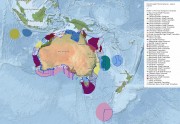
The Integrated Marine and Coastal Regionalisation of Australia (IMCRA v4.0) classified Australia's marine environment into ecologically rel
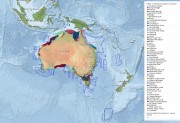
The Integrated Marine and Coastal Regionalisation of Australia (IMCRA v4.0) classified Australia's marine environment into ecologically rel
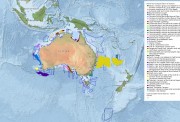
The Key Ecological Features (KEFs) are parts of the marine ecosystem that are considered to be of particular importance for either a region's biodiversity or its ecosystem function and integrity.
Bathomes are large spatial regions (usually exceeding 1000 km2) characterised by the bathymetric (depth-related) distribution of biota.
Bottom current velocity can affect abundance and biodiversity of benthic fauna by altering disturbance regimes, changing available habitats, and regulating nutrient flows.
Geomorphologic features are categorical descriptors of the shape of the seabed that range in scale from thousands of km2 (e.g. basins) to tens of m2 (e.g.
Chlorophyll-a can be estimated at continuous broad scales in the top layers of the ocean via satellite imagery (note this is different from chlorophyll-a in sediments).
Sediment grain-size is often assumed to be a key driver of infaunal communities (McArthur et al. 2010).



